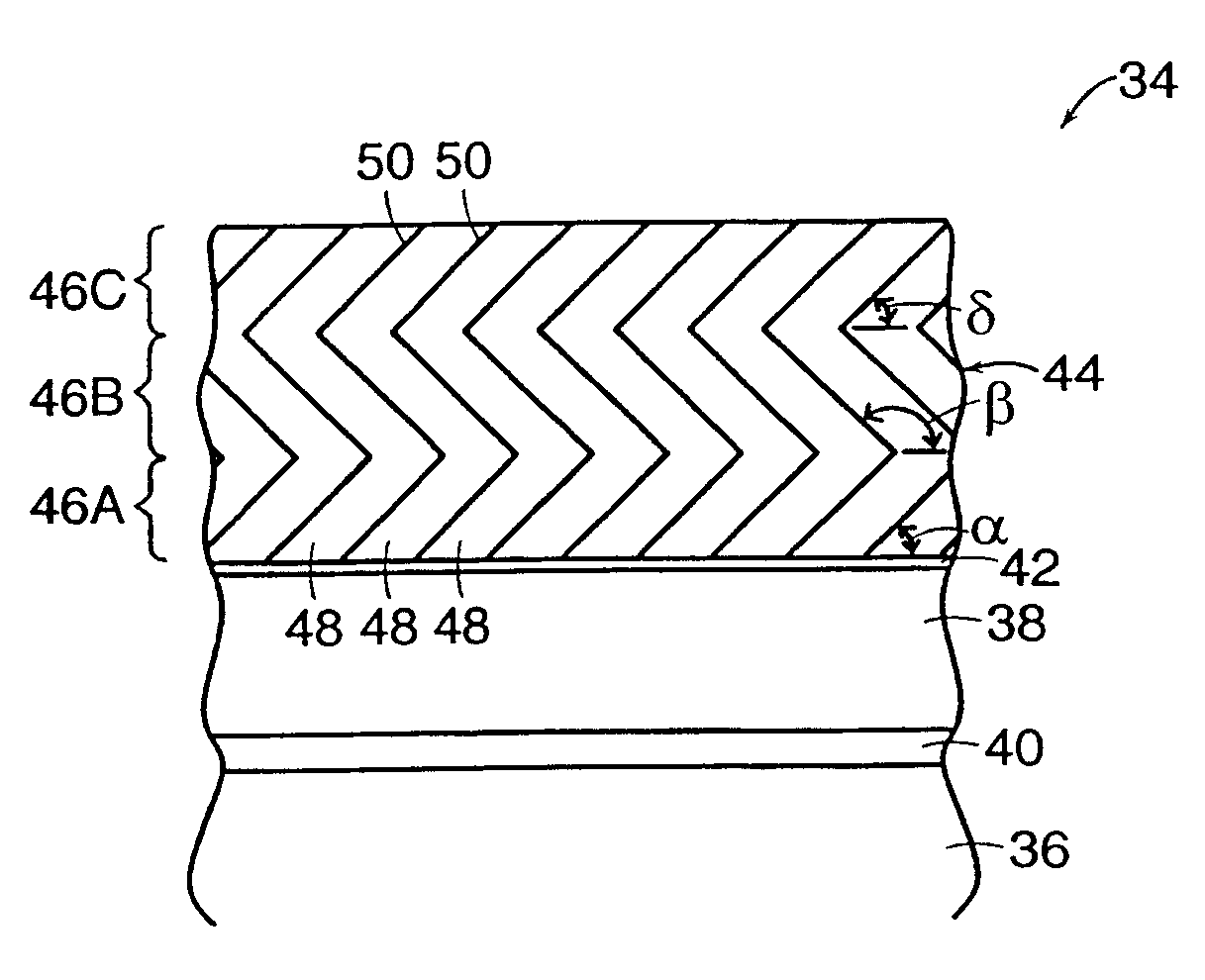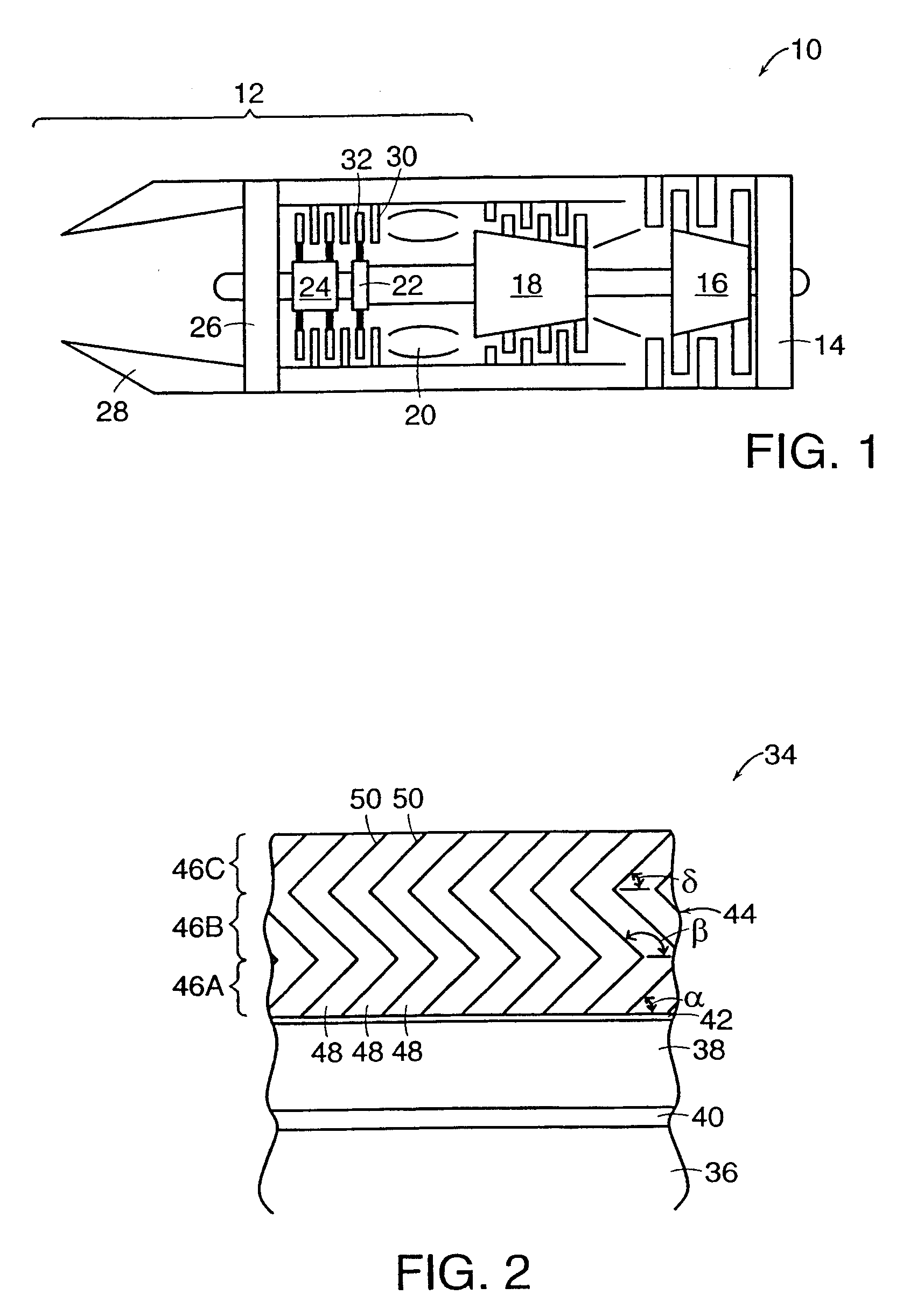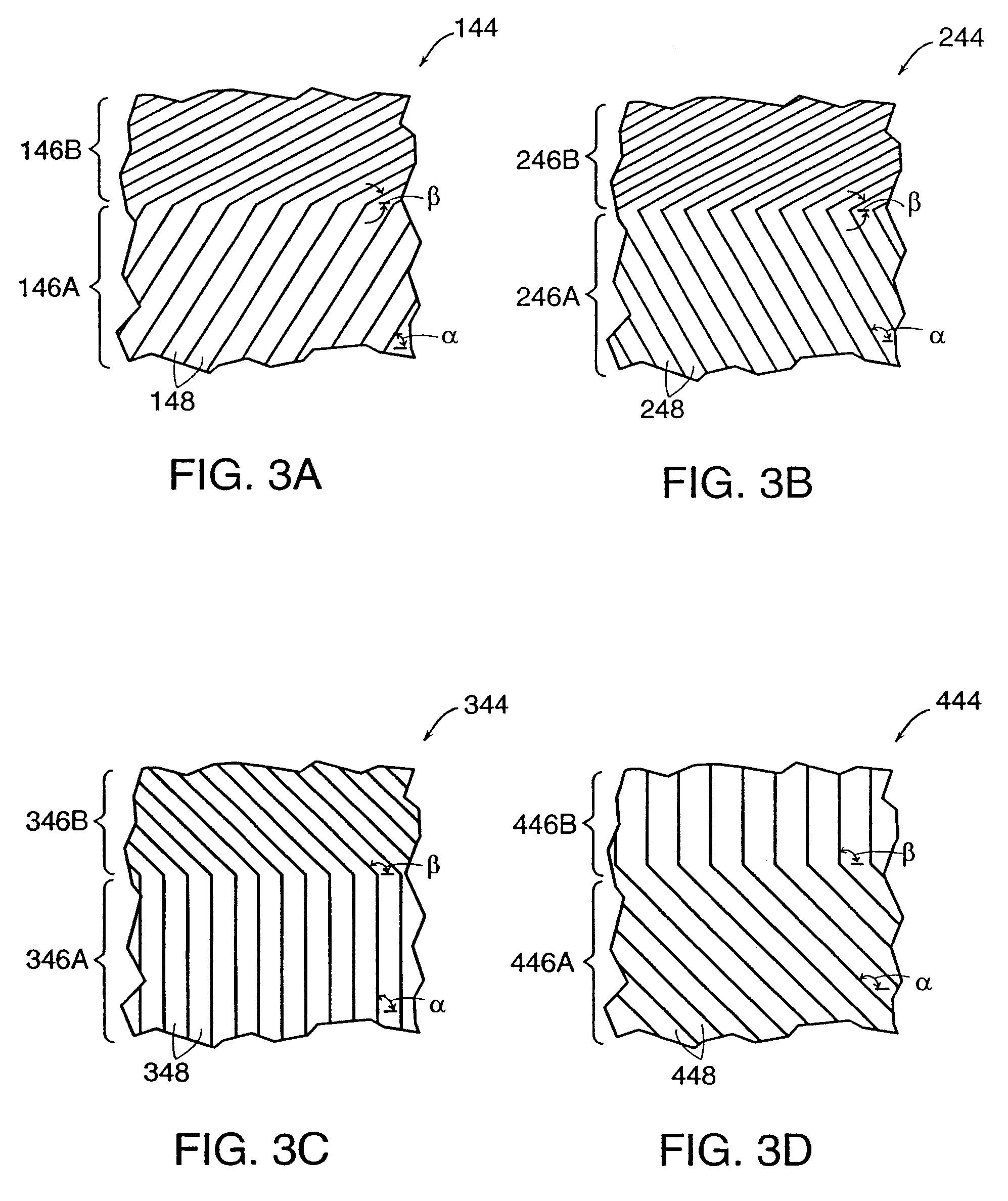Thermal barrier coating ceramic structure
a ceramic structure and thermal barrier technology, applied in the direction of non-positive displacement fluid engine components, liquid fuel engine components, efficient propulsion technologies, etc., can solve the problems of conventional ceramic coatings being prone to delamination at or near the nozzle, oxidizing and corroding,
- Summary
- Abstract
- Description
- Claims
- Application Information
AI Technical Summary
Problems solved by technology
Method used
Image
Examples
example 1
Test samples of cast CMSX2 single crystal material were coated with about a 50 .mu.m thick platinum aluminide bond coating and heat treated in a vacuum to adjust the surface concentration of aluminum to between about 20 weight percent and about 24 weight percent. Each sample was placed in a modified EB-PVD coating apparatus and preheated to about 850.degree. C. by an electron beam. A first columnar ceramic topcoat layer was applied by orienting the sample at a first predetermined angle substantially perpendicular to an ingot having a composition of ZrO.sub.2 --8%Y.sub.2 O.sub.3. The sample was maintained in this orientation and rotated at a rate of about 25 rotations per minute ("rpm") for a total period of about one minute while the ingot was vaporized by an electron beam with a power of about 38 kW. The resulting ceramic vapor cloud condensed on the preheated sample producing a first columnar layer substantially perpendicular to the platinum aluminide bond coat and underlying subs...
example 2
Test samples of Hastelloy X with an LPPS bond coating were pre-treated by ceramic peening, vibro-polishing, and cleaning. Each sample was placed in a modified EB-PVD coating apparatus and preheated to about 850.degree. C. by an electron beam. A first columnar ceramic topcoat layer was applied by orienting the sample at a first predetermined angle of about negative 45 degrees relative to an orientation normal to an ingot. The sample was maintained in this orientation for a total period of about one minute while the ingot having a composition of ZrO.sub.2 --8%Y.sub.2 O.sub.3 was vaporized by an electron beam with a power of about 38 kW. The resulting ceramic vapor cloud condensed on the preheated sample producing a first columnar layer having a grain orientation direction angle of close to about 135 degrees relative to the bond coating and underlying substrate. The sample was then alternatively reoriented to angles of about positive 45 degrees and back to negative 45 degrees relative ...
PUM
| Property | Measurement | Unit |
|---|---|---|
| Structure | aaaaa | aaaaa |
| Microstructure | aaaaa | aaaaa |
Abstract
Description
Claims
Application Information
 Login to View More
Login to View More - R&D
- Intellectual Property
- Life Sciences
- Materials
- Tech Scout
- Unparalleled Data Quality
- Higher Quality Content
- 60% Fewer Hallucinations
Browse by: Latest US Patents, China's latest patents, Technical Efficacy Thesaurus, Application Domain, Technology Topic, Popular Technical Reports.
© 2025 PatSnap. All rights reserved.Legal|Privacy policy|Modern Slavery Act Transparency Statement|Sitemap|About US| Contact US: help@patsnap.com



